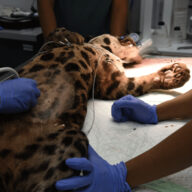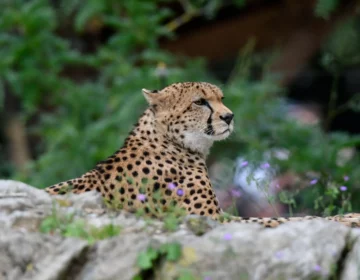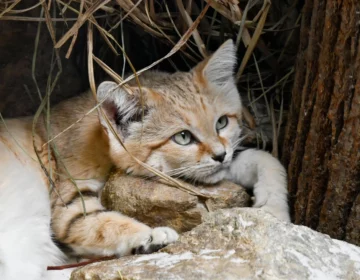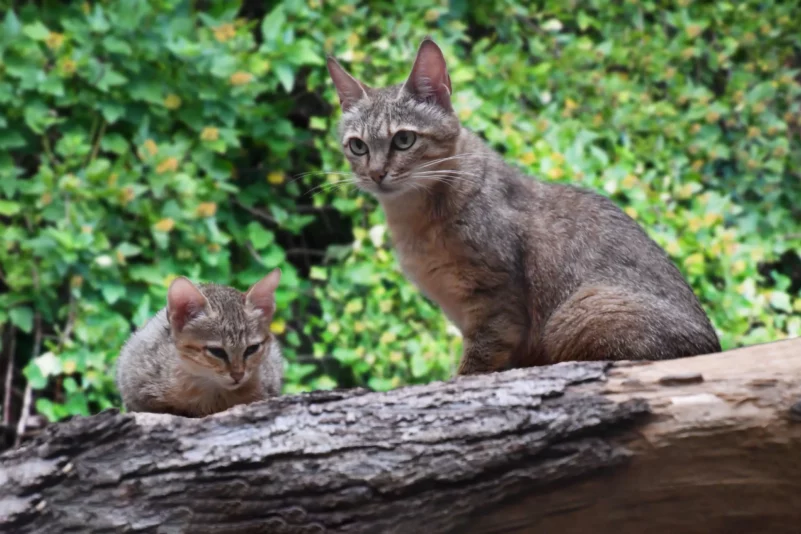
Nubian cat
Felis lybica
Nubian cat
APPEARANCE
The Nubian cat is the size of a large domestic cat. It has longer legs than the domestic cat, which gives it a more upright sitting posture. Its fur is short, ranging in shades from reddish to sandy or beige to greyish, usually marked with faint stripes and spots on the body and sides. Nubian cats have short snouts coloured orange around the nose and white patches below the eyes. The tail is long with three black rings and a dark tip. Its paw pads are black, as in the black-footed cat. The Nubian cat can be distinguished from the European wildcat by its lighter build, less distinct patterns and thin, tapering tail.
DISTRIBUTION AND HABITAT
It is found in vast areas of Africa and on the edges of the Arabian Peninsula up to the Caspian Sea. It is found in all countries of eastern and southern Africa. In North Africa it occurs discontinuously from Morocco through Algeria, Tunisia and Libya to Egypt. In West Africa, it is widely distributed from Mauritania to the Horn of Africa, Sudan and Ethiopia.
The Nubian cat has a very wide habitat tolerance and is found in deserts, semi-deserts, savannas, hilly, rocky, bushy and low-density forest, as well as in mixed forests.
BEHAVIOUR
The Nubian cat is a solitary species, but can form temporary, large groups consisting of a female and her offspring from several successive litters. It is mainly active at night, especially in areas with hot climates or near human habitation.
FOOD
The main prey of the Nubian cat are rodents such as rats, mice and voles. It also hunts hares, rabbits, birds, insects, frogs, lizards, fish and occasionally martens, weasels, polecats and poultry. Occasionally attacks young antelopes or livestock.
MAIN THREATS
Hybridisation with domestic cats is considered the main threat to the Nubian cat.
